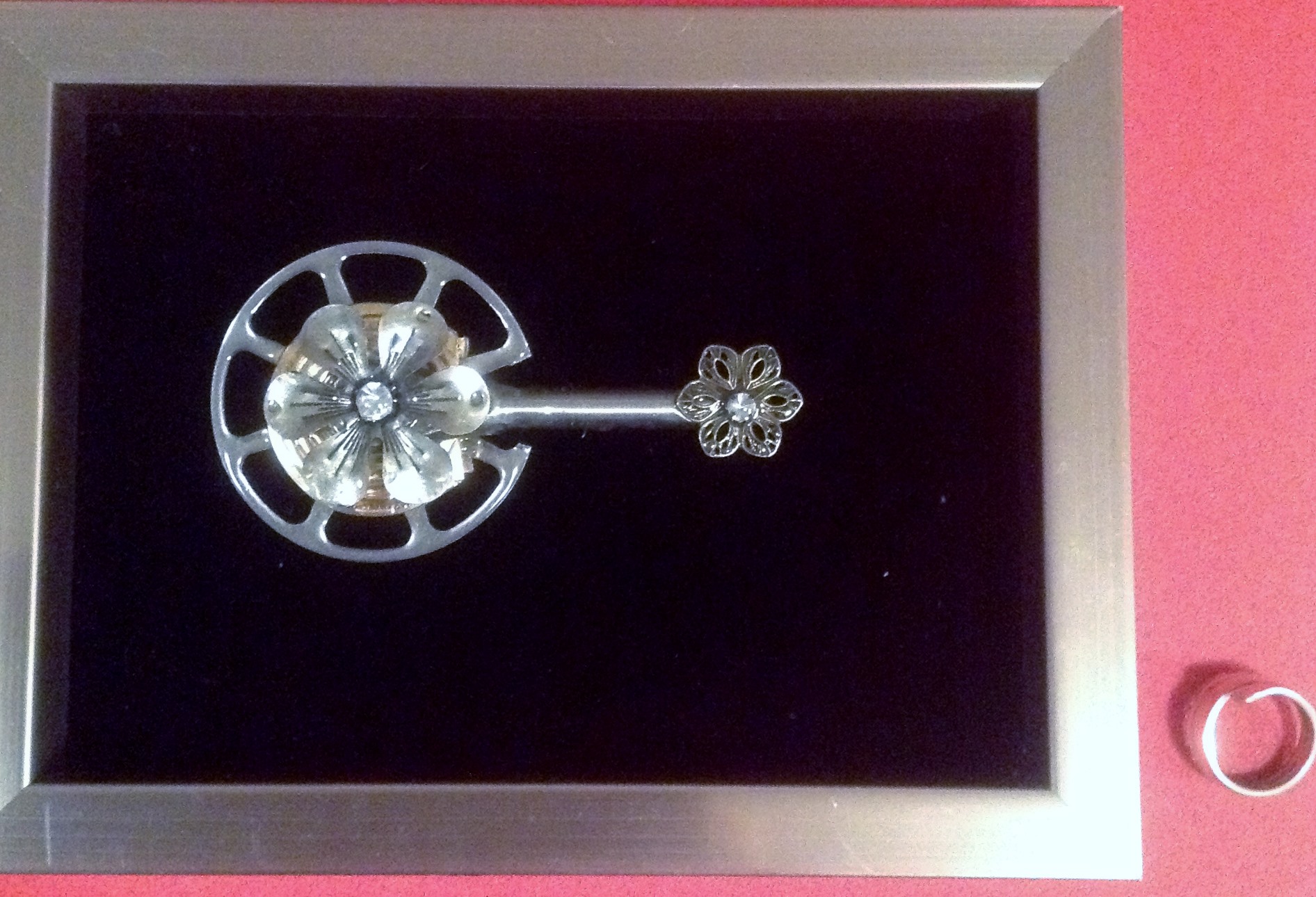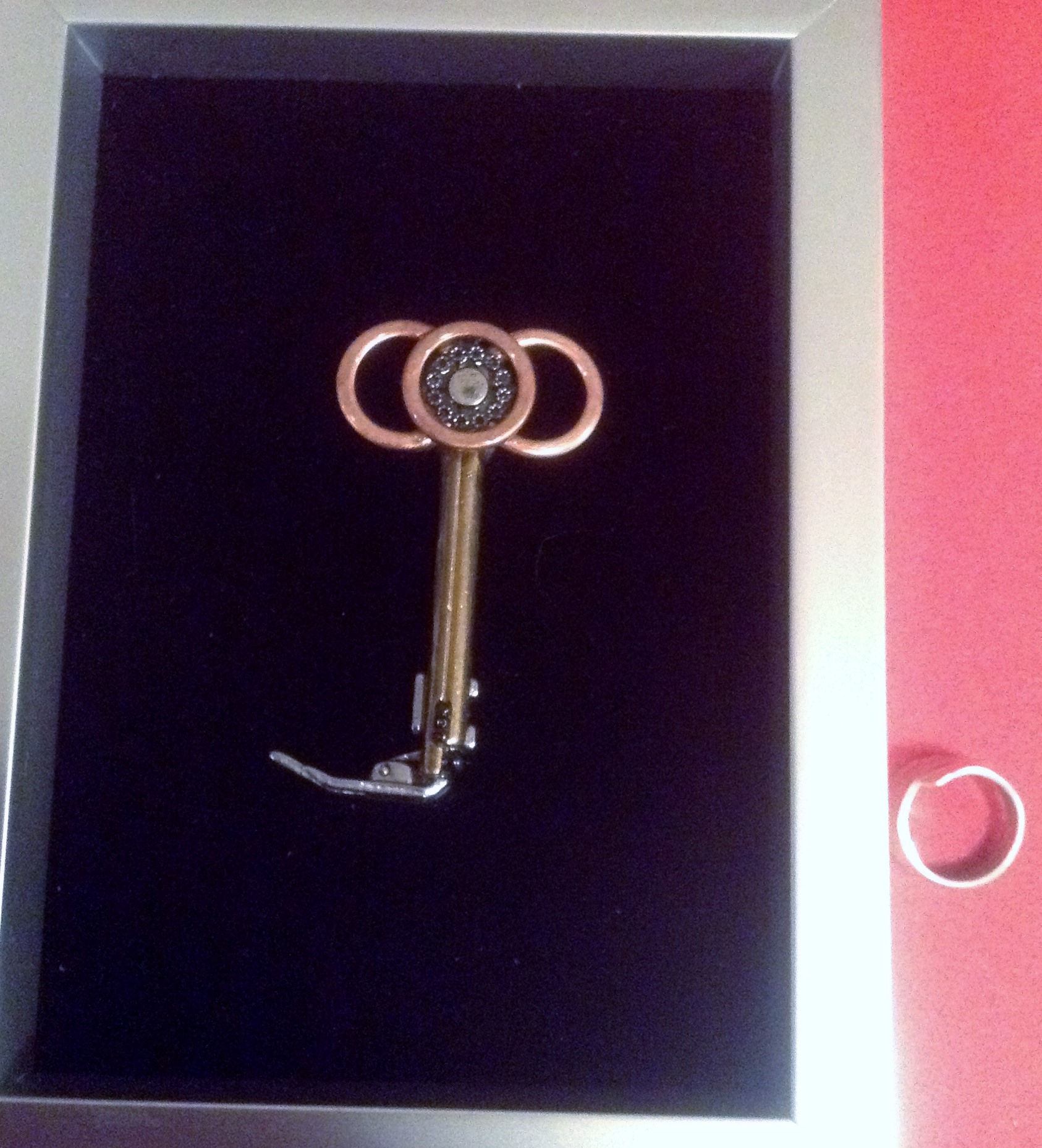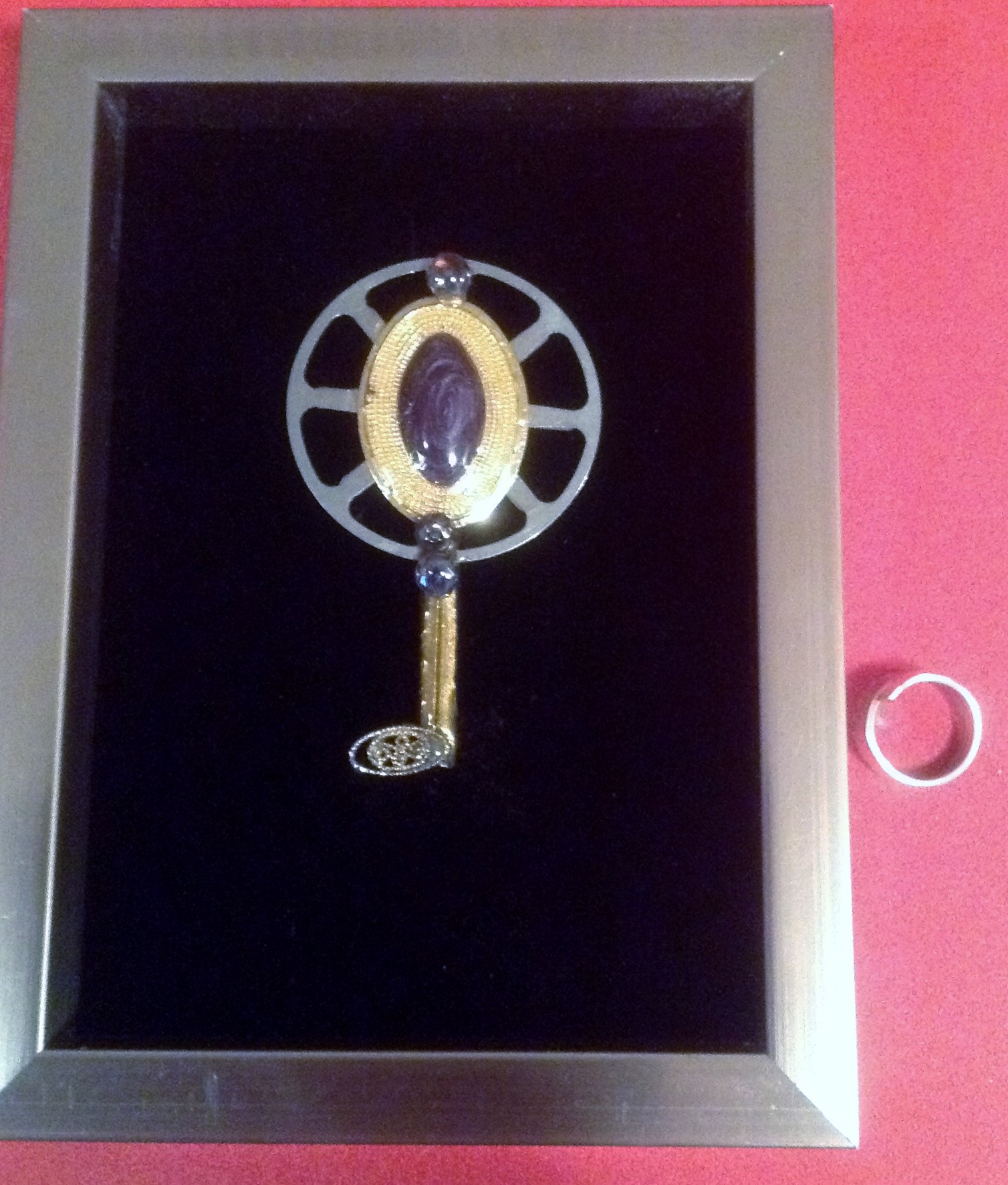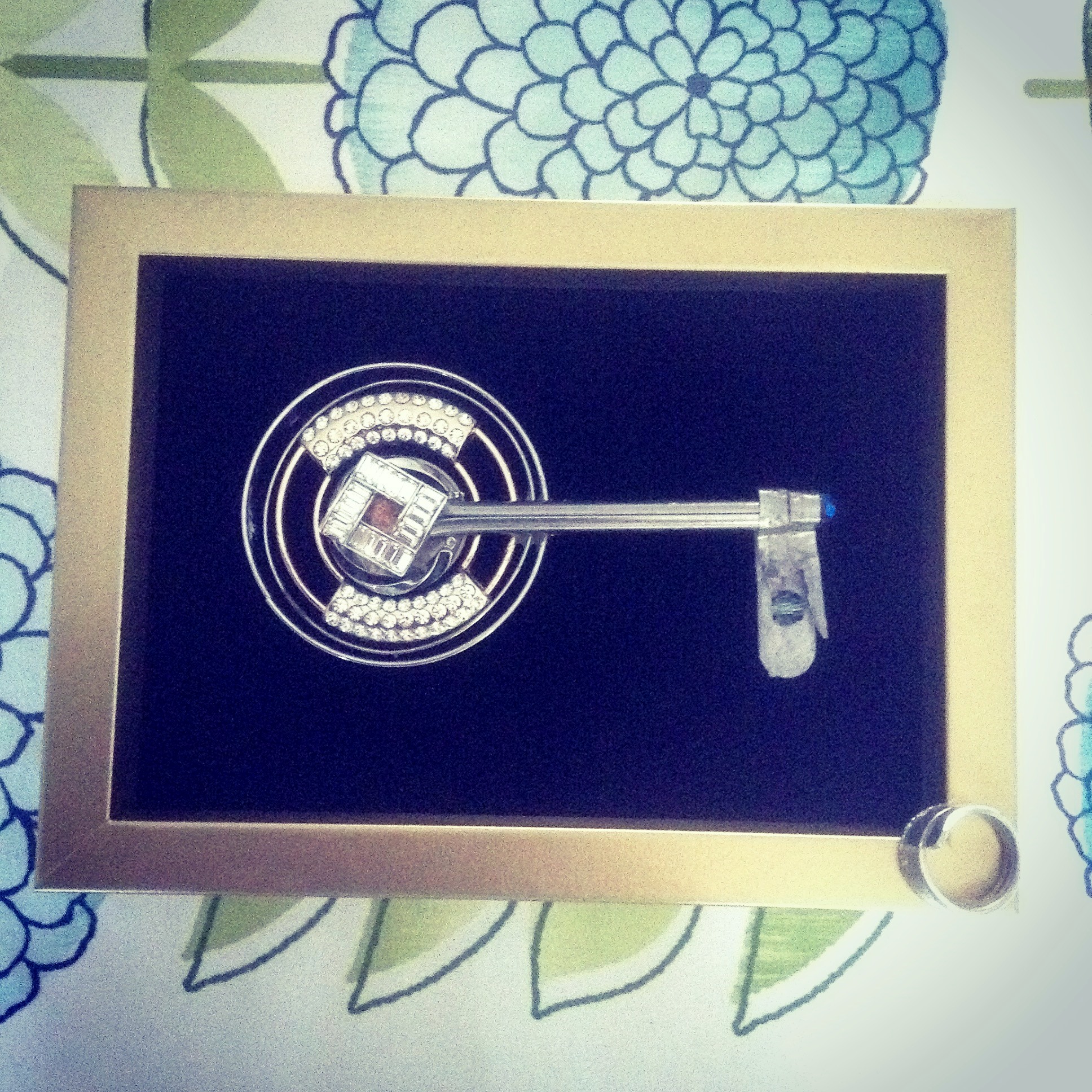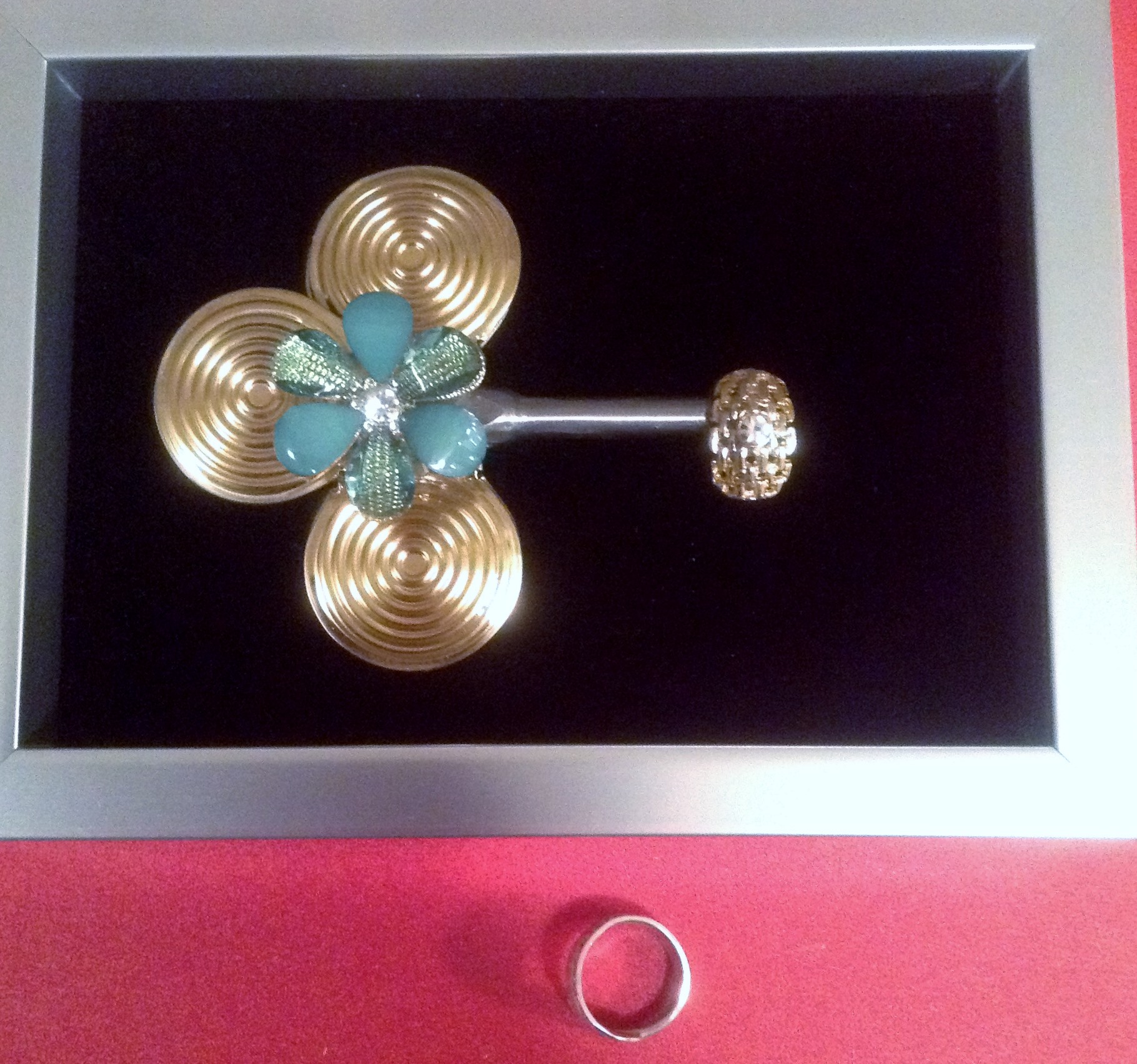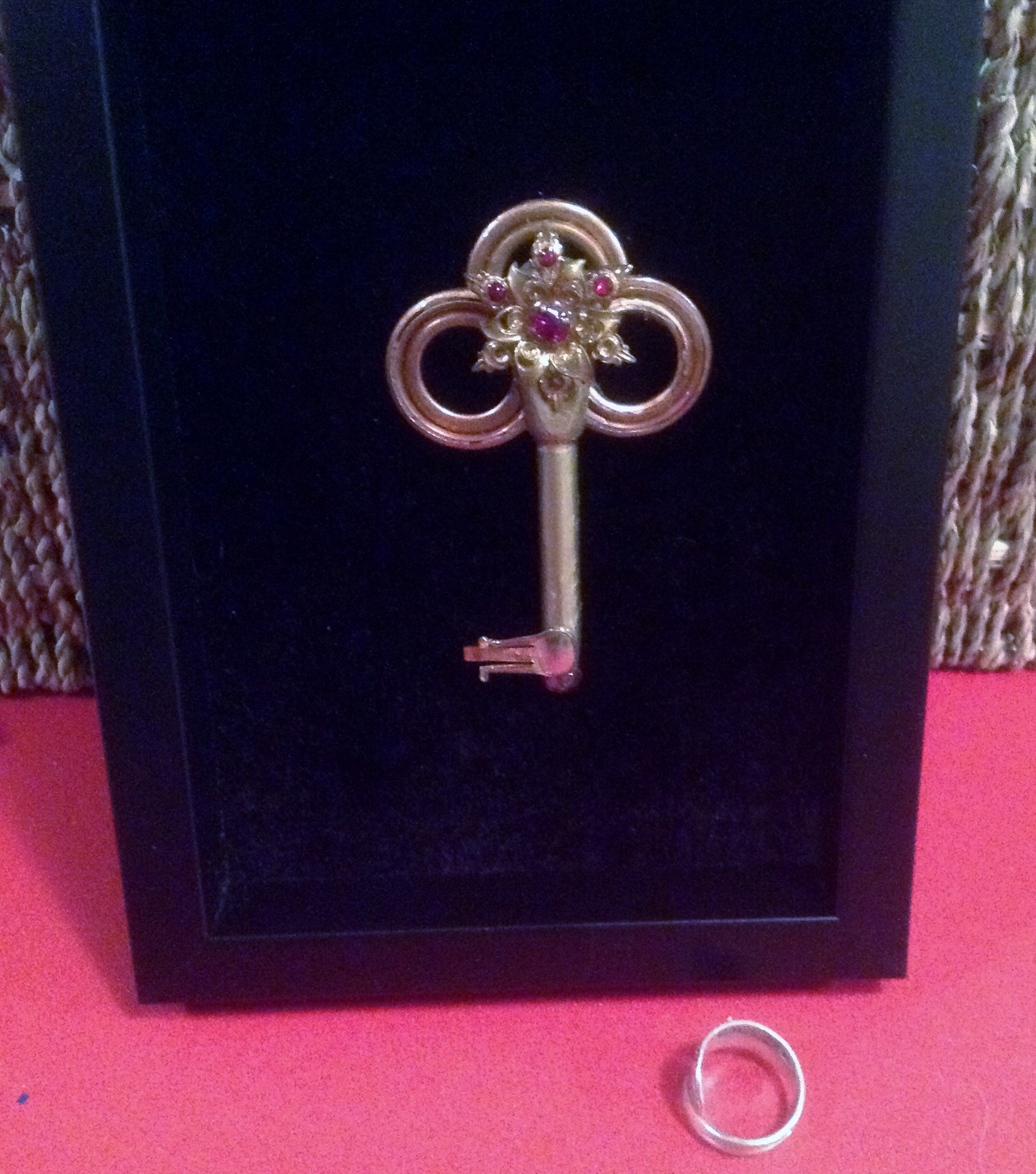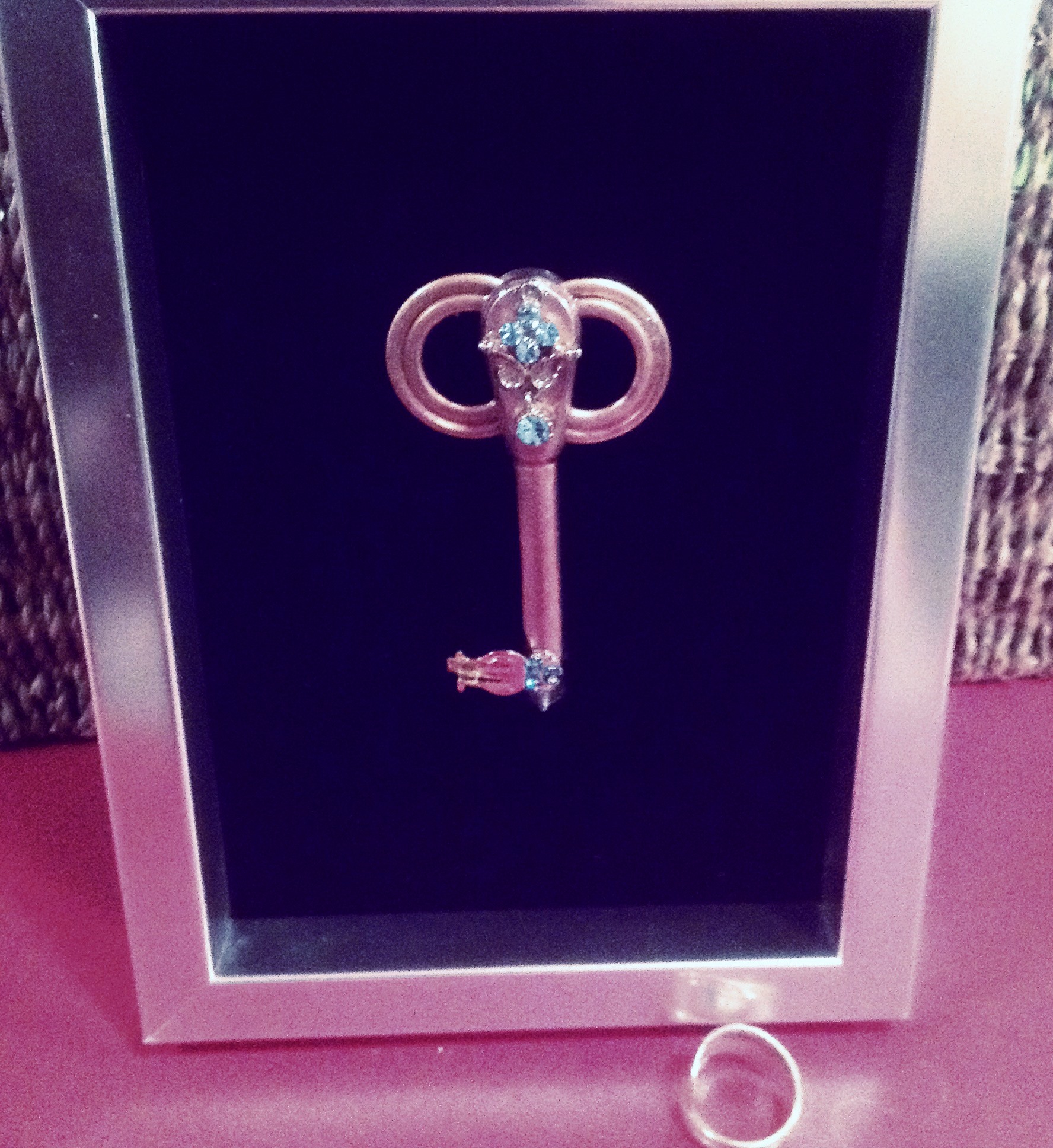 I bought some frames from Dollarama. Perhaps you've heard that more and more people shop at that store for cleaning products etc. This was a company that it would have been good to buy stocks in a few years ago. (Darn, if I only knew then...) I also bought a velvety type dress from Value Village. Then I covered the glass in the frame with some fabric from the dress, cut a little hole into the fabric, added some glue, and mounted a key on it. Turned out pretty good. The "framed" keys look like this:
I bought some frames from Dollarama. Perhaps you've heard that more and more people shop at that store for cleaning products etc. This was a company that it would have been good to buy stocks in a few years ago. (Darn, if I only knew then...) I also bought a velvety type dress from Value Village. Then I covered the glass in the frame with some fabric from the dress, cut a little hole into the fabric, added some glue, and mounted a key on it. Turned out pretty good. The "framed" keys look like this:
That's my ring next to the framed key - so you can get a better sense of the size of the frame and the key. The frame is for a 4 x 6 picture (the outer edge is almost 6 x 8). The metal "spokes" on the key are from a filter; the metal bits are stacked together and the liquid (oil maybe?) runs through them and the spokes clean the liquid. At least that's what the guy at the auction house told me.
Today I learned that the metal pin I used to make Key 120 is a Cotter pin. According to the steel fastener website they are "wire formed fasteners used externally in holed applications; they have been around for centuries. These low-cost and highly versatile fasteners are used virtually everywhere. Cotter pins can be installed quickly and with no special tools. Designed to be self-locking, cotter pins provide secure fastening. Most cotter pins are easily removed and reused, saving time and money. Extended prong makes separation of the prongs easier. Square cut prongs have a cleaner visual appearance." I mainly use the extended prong ones (easier to add the end bit on) although I think I have found and used a few with a cleaner visual appearance...
Thank you guy at the Market sale I was at today for telling me about Cotter pins. I seem to be using an abundance of things that are meant for fastening as the base of my keys.
Hmm...Keys: locking/unlocking. Fasteners: holding together and letting go. Both things opening and closing...
Key 121 is quite small and simple. The bottom is a foot for a sewing machine and the medallion is almost like a button (well, it had thread in it but I think it was more decorative than practical as it's very thin). Even though this key has very few components I decided it was finished. Sometimes things are OK just as they are.
I wasn't sure about this one (122). I bought a belt with all these gold disc things on it...I like shiny stuff and was drawn to this belt. Now I think that the discs aren't really to my taste. I need to think of a different way to incorporate them into the keys; a way that works for me and helps me remember why I liked them in the first place. I do like that the end piece is from the road, sometimes I think that the broken bits from the road are the best part - they're covered in a world of patina and for sure are one of a kind.
I wasn't able to capture just how shiny the "emerald" is in this key (123) - sorry about that. Perhaps this is incentive for you to come see the keys in person? And for me to take some lessons and/or hire a photographer?
Last week I bought a case full of earrings at a garage sale from a guy who used to sell the earrings at flea markets. A whole case (around 300 pairs!), the seller insisted I take a plastic file case to store them in. He even lined it with paper towel so that no moisture could get in and cause a problem (he actually layered in some paper towel at several intervals to keep the earrings nice). At first I wasn't sure I should buy that many pairs of earrings and then I thought...I do have to make 5000 keys and he is selling them for 6 pairs for a dollar...so...Here is the first earring from that case on a key:
OK so Key 125 is really Key 130...when I was adding the pictures to this post I realized I'd counted Key 123 as Key 123 and as Key 125...it was actually faster to add in a new Key 125 then redo all the labeling on the photos...I like the rings on this key - which are mostly various earring parts. This key is also made on a Cotter pin (so exciting to learn new things!) and the end bit is some squished metal from the road that is rather sharp on one end. So given the rings - which aren't that stable - and the pointy bit - it's best that this key is mounted onto something soft...
The ring on this key (126) is a sealing ring that was used to seal asbestos - into what I don't know. The sealing ring itself is very light and coated with thin copper. And look - another Cotter pin! The dragonfly on the end was an earring.
Key 127 is also very sparkly. The light green petals on the centre piece (which was a broach) are a shimmery iridescence.
The broach was rather high - here's a side view:
More sealing rings and a pin for Key 128. The base of this one is a terminal. 2500 Terminals and 1 Amazing Shopping Cart And the end is a clip from a clip-on earring.
Another clip from a clip on earring, sealing rings, pieces of earrings and a terminal:
Every now and again I put a key aside because it's just a little bit extra special to me. Key 130 is one of those keys. It's not just the sparkly rhinestones, it's that the pieces are older and have been around. More life experience. And an interesting and subtle shade of green in some of the stones that I don't think I've seen before. Plus the metal background on the "handle" is gold so the rhinestones have a bit of a yellowish glow to them and the background on the end bit has a bit of black so the silver there looks even more silver. Oh, and it's made on a Cotter pin...
People ask me about my fascination with keys. I'm still trying to figure it out. What needs to be unlocked? What needs to be explored? I like that things that have been discarded can be remade into something beautiful. I like that things that are used for one purpose can come together and be used for something imaginative and take the viewer somewhere magical in their mind.
